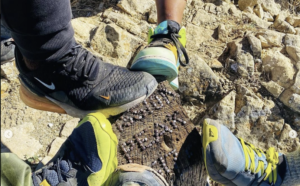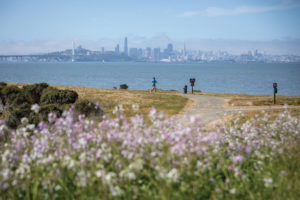One Saturday morning late last spring, I pulled into Garin Regional Park in the hills above Hayward. I didn’t have the $5 for parking, but intuiting why I was there, the ranger let me pass anyway. A crowd was amassing. The people, of varied ancestries and ages, walked past rusted tractors and a rustic red barn. They were making their way to a grassy area between a green hill and a cluster of picnic tables and barbecue grills tucked under the shade of a handful of oak trees.
I watched as Marcus Penn, a tall, thin African American man wearing a gray newsboy cap, began leading the 50 or 60 people assembled through a series of yoga poses, using a voice that carried. Everyone raised their arms above their heads and I took in the faces: older Asian ladies wearing big sunglasses, white guys in their baseball caps, Latinx families and kids. There were white couples, black men—myself included—and women in headscarves.
Penn interspersed his instructions with comments on the day-to-day grind people in the Bay Area face. A medical doctor in his forties, Penn emphasized that these yoga stretches and the hike we were about to embark on were an opportunity to get away from that stress, if only momentarily. The purpose of the walk was to expose East Bay residents who don’t typically visit parks to the health benefits of doing so. That was the overarching goal of the Multicultural Wellness Walks organizers—the East Bay Regional Park District, its supporting Regional Parks Foundation, and Kaiser Permanente.
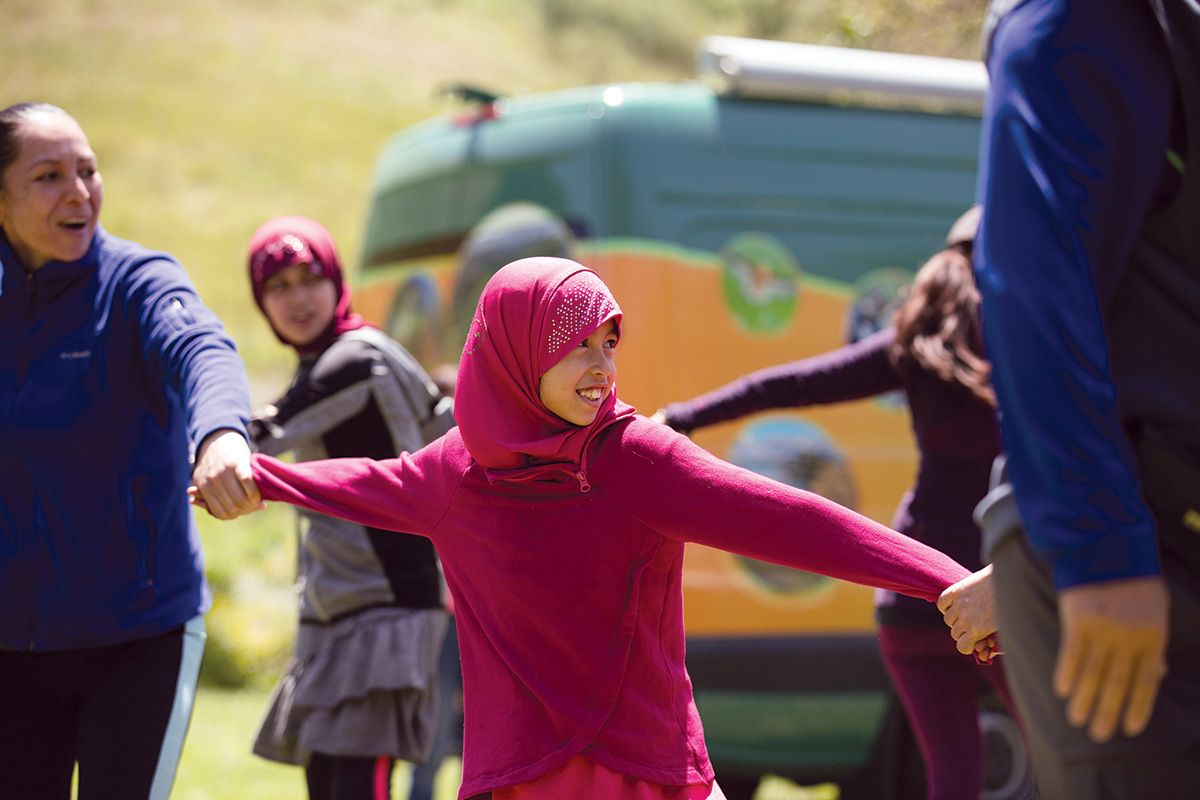
The Bay Area, home to the country’s first soda tax (in Berkeley), may have an image of itself as supremely health conscious, but in reality, many communities here struggle with obesity-related ailments. More than half of adults and one-third of kids in Alameda County suffer from being overweight or obese, according to a 2014 Alameda County Public Health Department report. Adults are similarly overweight in Contra Costa County, where, as in the rest of the country, cancer and heart disease are the two leading causes of death. Obesity-related health problems such as high blood pressure, diabetes, and heart disease hit African American communities particularly hard. The stereotyping, discrimination, and segregation that these and other communities experience may contribute to such health inequities.
“We are really concerned about public health and increasingly sedentary lifestyles,” says Mona Koh, community relations manager for the EBRPD, which serves Alameda and Contra Costa counties. “Since we manage and protect lands, lakes, and shorelines, it makes sense that we connect public health with public lands.” Walking in parks is an obvious, low-cost way to improve health. Koh points to the medical community’s conclusions that even short periods of time spent outdoors in nature can reduce depression and lower blood pressure and levels of the stress hormone cortisol, which can become elevated with chronic stress and anxiety. “For us, it’s about the nexus of public lands, health, and equity,” she says. “We bring in communities who don’t have the financial means or a history of knowing about these parks. We make the parks accessible for the community to explore and to enjoy.”
In 2014, Alameda County estimated that health care spending and lost worker productivity associated with obesity cost the county $2.17 billion (in 2006), and that number was projected to rise. A few years earlier, the park district embraced the Healthy Parks Healthy People movement. The campaign, first launched in Australia almost a decade ago, links human health with ecological health and has caught on in park agencies worldwide. The district’s Healthy Parks Healthy People programs are numerous and include working with health care providers, such as UCSF Benioff Children’s Hospital Oakland, Kaiser Permanente, and Contra Costa Health Services, to bring patients and community groups to the parks for mental and physical benefits.
“Why is this program so special?” Koh asks rhetorically about the Multicultural Wellness Walk series. “Walking is not [an exceptional] phenomenon. You can go for a walk, but we’re working with the health industry and a very different demographic community of people. We’re bringing in people from all different backgrounds and faith traditions to walk together and connect with each other in meaningful ways.”
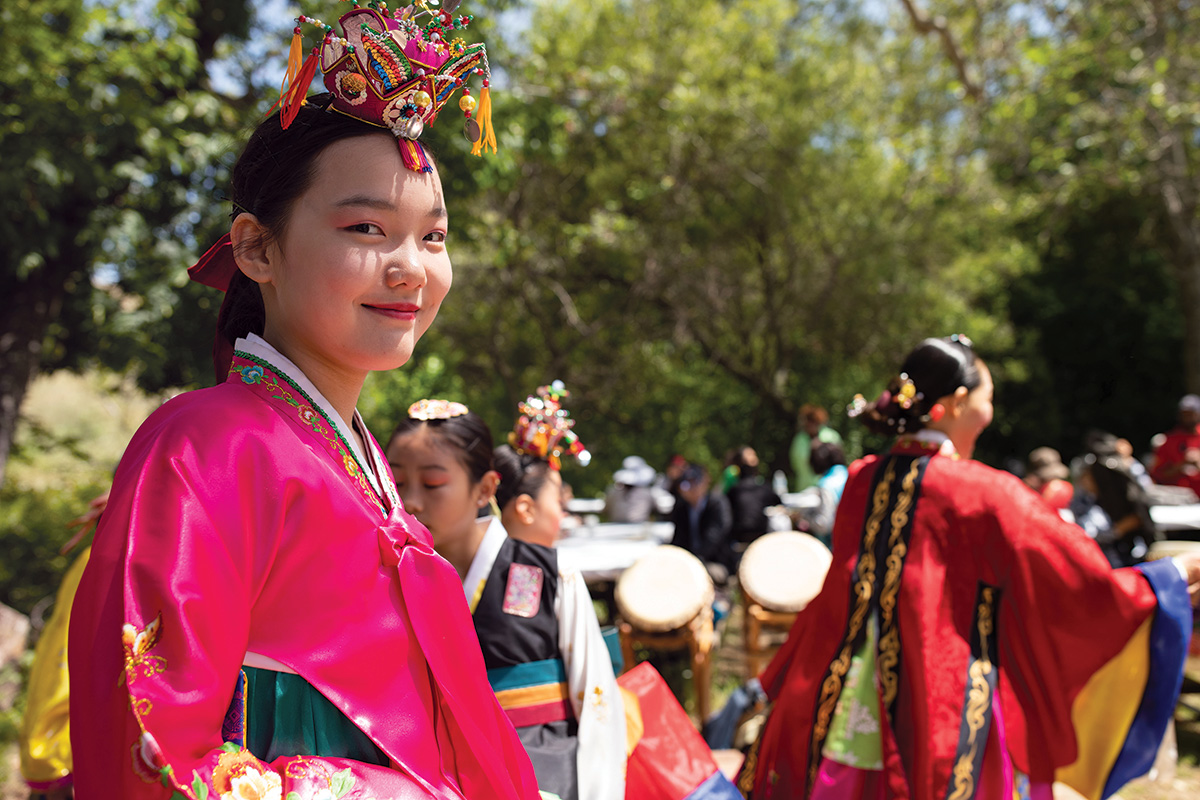
A San Francisco native, Penn knows how culturally rich this part of the world is, and also how divided it can be. San Francisco is home to more billionaires per capita than anywhere else, as well as grinding poverty and homelessness so egregious that the United Nations has called it “cruel and inhumane.” And then there are the many middle-income people trying to navigate an increasingly unaffordable local economy. Relieving the stress that arises from these pressures is one reason for the walks, Penn told the crowd. Another is to promote “cultural exposure, as a way to bring community together—and discovering different parts of the Bay.”
After muscles were stretched and jokes cracked, people topped off water bottles, loaded up on apples, oranges, and Nutri-Grain bars, and prepared to hit the trail, but not before a few words from Koh. As attendees continued to arrive in the grassy clearing, she spoke into a microphone attached to an amplifier, her voice echoing around the small valley, asking for audience participation in saying good morning in various languages. The crowd joined in saying “joh-eun achim,” “buenos días,” “sabah alkhyr,” “zăoshang hăo,” and “good morning,” collectively covering Korean, Spanish, Arabic, Chinese, and English. She closed by suggesting that everyone talk to three different people—folks whom they didn’t know before today, people of different cultures, faiths or traditions—and “think of something to be grateful for.”
As people started down the trail, I fell in with Bobbie Carpenter, a first-time walker, and her friend Charlotte Harrell, a more seasoned hiker. Harrell, who had invited Carpenter along, said she’d been coming to these hikes for more than four years for three main reasons. “First, to have the experience of coming to the diverse parks within the regional system; I really like that,” she said. “Second of all, it’s intergenerational. I love seeing the seniors—which, I’m a senior. And the children. I’ve been coming long enough to see some of the kids grow up. The third thing is having the naturalists lead the docent-led walks,” Harrell added. “And then also, the warm-ups. I like the warm-ups.”
Harrell laughed as she recalled recent warm-up exercises. “One walk I was on, we had someone warm us up with laughing therapy, which was different for me,” she said. “Laughter yoga” aims to get people to let down their guard—to relieve tension and to build community—by laughing together. EBRPD brings in health professionals, like Penn, from a variety of disciplines and cultural traditions, including qigong, yoga, and acupuncture, to help lead each walk.
“The last walk I was on,” Harrell said, “we had a Zumba instructor, so it was interesting in assisting some participants to do the Wobble Wobble.” I smiled, imagining the spontaneous “laughing therapy” that likely occurred when the group did this hip-hop dance.
From the patch of grass that served as a yoga mat, the party headed west for an easy, roughly three-mile hike. Koh moved from group to group introducing people. Several kids ran ahead, speaking Spanish. Jordan Pond, a small water body with a wooden dock, appeared around a bend. It seemed to be out of a storybook, with ample reeds surrounding it and a few mallard ducks floating lazily in its calm waters. The group stopped and stretched again along its shore. The same kids who had run past earlier were now squatting on the bank of the pond, poking at vegetation and the water with sticks. The adults followed Penn for another round of yoga. Park district naturalist Kristina Parkison spoke about the park’s ecology and history.
When we set off again, we came to a small branch of Dry Creek that we had to ford. It was probably the most challenging part of the two-hour walk. A boy in a gray hoodie slipped and fell on the stream plants but, young and ever resilient, was up in a flash. A trail safety volunteer assisted an older woman pushing a stroller and other hikers who were having difficulties.
We continued uphill for a few minutes before reaching a clearing on the hillside. From that vantage point, looking westward, we could see the flatlands of the East Bay—the houses, BART, and the Bay itself—spread out before us. A few cars moved through the streets below. The cold morning was giving way to California sunshine. As the clouds broke, birds flew past. It was like looking into a snow globe of the East Bay. My usual train of thought about work and the many things I needed to do fell away for a brief moment. I could see how this could be very meditative.
The kids were still running around chattering, and a footprint in the middle of a pile of cow dung suggested that one of them had learned the hard lesson that cow pies are dry and crusty on the outside, but inside is a whole ’nother story. A portion of the group headed toward the parking lot, but the rest of us walked back to the grass where we’d convened earlier, and where now a post-walk meal was to be served. As people ate, a performance of traditional Korean dancing began. A group of little girls spun, accompanied by a drumbeat, wearing magnificent Korean dresses called hanboks.
Some people gathered to watch, while others mixed and mingled. Park district naturalists set out an educational display of fox, skunk, and squirrel pelts—examples of animals that live in the park. Kids and grown-ups gathered around to touch and marvel at the furs.
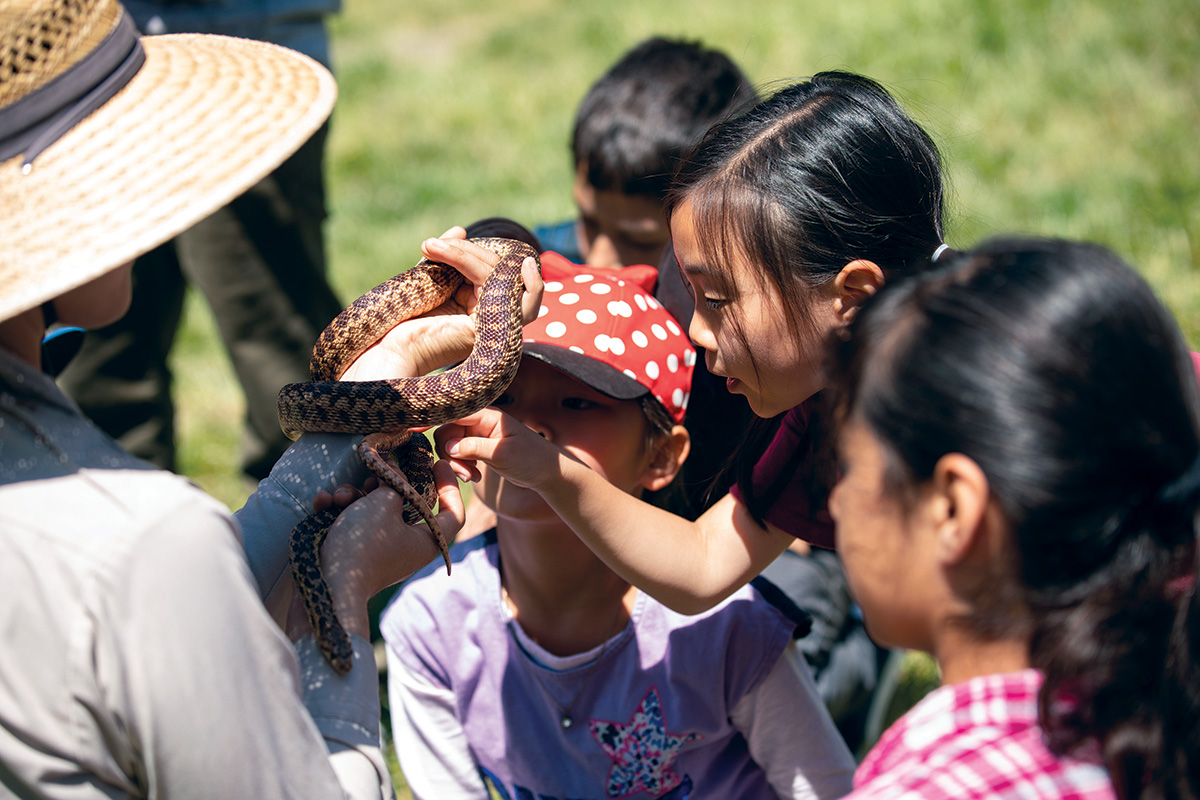
I began talking with a young African American man wearing a Howard University sweatshirt. He was a nurse and had recently moved to the Bay Area. He had come on these walks several times to meet people and find community. With his medical background, he was also well aware of the health benefits of spending time in nature—another reason for being a repeat customer. We both remarked on the diversity of the group making Korean kimbap, the all-veggie rice-and-seaweed rolls that we were eating, and wondered aloud where else this could happen.
The scene got me thinking: I know people who organize walks like this—hikes for the Latinx or African American communities. But often those walks end up including just the organizers’ friends, who are mostly of the same ancestry and who already know each other. This hike, by comparison, had a true breadth of participants. Unlike those other walks, it was full of people you really might not meet in your daily life—and better organized as well. I made a mental note to tell my friends about it.
After a while, the 240-plus participants began to disperse. They’d had a rich experience: nature, conversation, yoga, food. Penn hoped they’d take some of it with them to their daily lives. “The focus is health within nature,” he told me later. “That’s why it’s constantly reinforced,” he added, alluding to how he constantly pushes yoga, meditation, and community during these walks.
He doesn’t only want people to do yoga in the park on select Saturdays, he told me. He wants them to take what they’ve learned home, so they can better manage stress that might occur on a daily basis. υ



